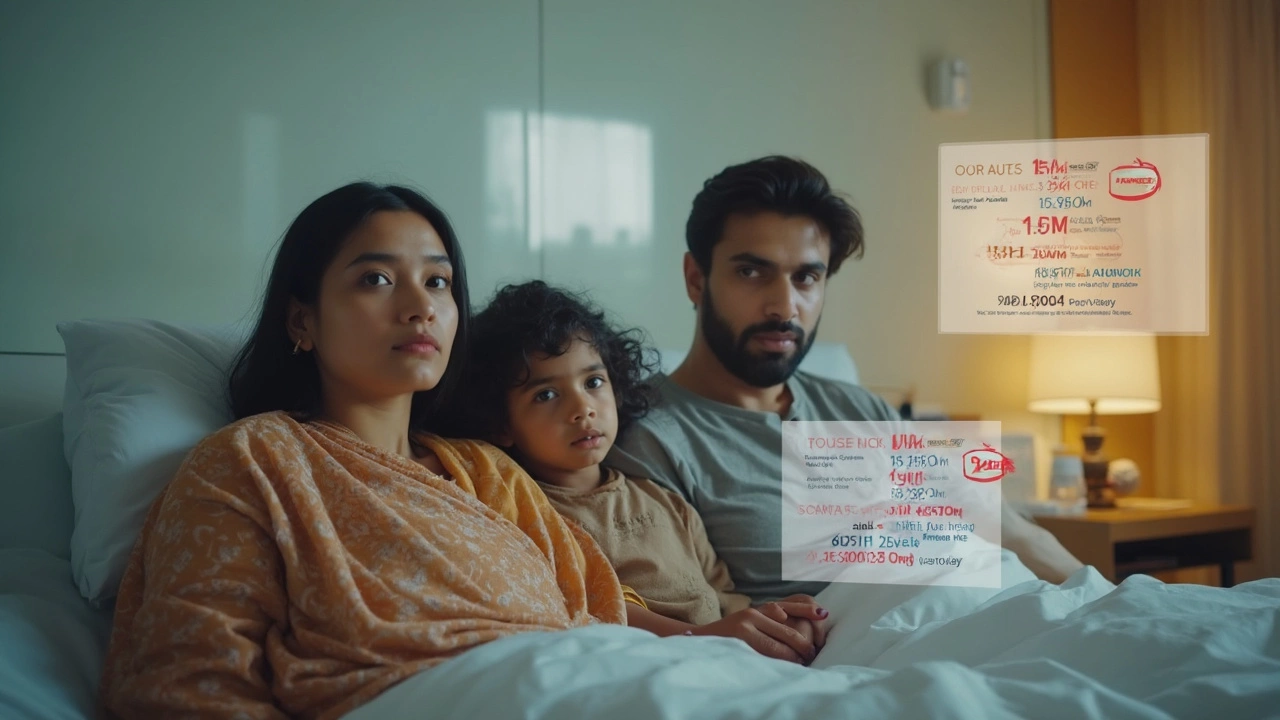Surviving cancer can be a brutal climb, but not all cancers are created equal. Certain cancers stick out because they’re especially tough to fight and have the lowest survival rates. Want the raw truth? Pancreatic, liver, and esophageal cancers often top the list. These aren’t just numbers—they’re diseases that don’t play fair. They hide out in the body, stay low-key, and by the time you spot them, they’ve already spread.
It’s not just about where a cancer starts, but how quickly it grows and whether it sends out hints early on. For many people, symptoms like odd abdominal pain or fatigue get shrugged off, and doctors often miss them too. By the time anyone figures it out, the cancer’s already set up camp in other organs. That’s why some types, especially pancreatic, have a way of sneaking past even the sharpest doctors.
- Why Some Cancers Are So Deadly
- Cancers with the Lowest Survival Rates
- Early Detection: The Game Changer
- Tips and Hope for Patients and Families
Why Some Cancers Are So Deadly
Some cancers are just plain stubborn and ruthless. Take pancreatic cancer, for example—it grows fast, spreads early, and barely shows symptoms until late in the game. That’s a big reason why the cancer survival rate for pancreatic cancer is so shockingly low. By the time most people get a diagnosis, the cancer has already broken out of the pancreas and moved into places that are tough to treat.
Another problem is location. Organs like the liver and the esophagus don’t give clear warning signs when something is wrong. You won’t feel a lump like with breast cancer, and there’s usually no early pain. That means these cancers get a head start before anyone notices something’s off.
It’s not just about sneaky symptoms, though. Some cancers can resist normal treatments like chemo and radiation. For example, brain cancers like glioblastoma have special cells that block drugs from getting in, making them even harder to treat. Plus, if a tumor is close to something vital—maybe a major blood vessel or the spine—surgeons can’t always safely remove it. That’s why survival rates stay low, even when doctors throw everything they’ve got at it.
Here are the main reasons some cancers are extra tough to beat:
- They spread early, often before you feel anything wrong.
- They hide out in organs that don’t show obvious symptoms.
- They don’t respond well to standard treatments.
- They’re located where surgery or radiation could do more harm than good.
- They can trick the immune system or protect themselves from medicines.
So when you see survival numbers that look scary, remember: it’s usually a mix of these factors at work. Understanding why can at least help you know what you’re up against, and why the fight can be so tough.
Cancers with the Lowest Survival Rates
When you’re talking about the toughest cancers out there, you can’t ignore how brutal some survival rates really are. Here’s a look at the main offenders that have the toughest odds:
- Pancreatic cancer is probably the worst out there. The five-year survival rate in the US is only about 13%. That means if 100 people get it, just 13 are around five years later.
- Liver cancer is another one that’s hard to catch early and tough to treat. The five-year survival rate sits around 21%.
- Esophageal cancer usually flies under the radar till it’s too late. Five years after diagnosis, only about 21% are still here.
- Lung cancer gets a lot of attention—and for good reason. Even with better treatments, less than 28% make it five years if you count all types, but it’s closer to 7% if it’s found after it spreads.
- Stomach (gastric) cancer isn’t super common, but it can be sneaky. Only about 36% survive five years past diagnosis.
Compare those to some of the more treatable cancers—like prostate or thyroid—which have five-year survival rates up into the 90% range. Makes a huge difference, right?
Just for a quick look, check out the numbers here:
| Cancer Type | 5-Year Survival Rate (US, 2025) |
|---|---|
| Pancreatic | 13% |
| Liver | 21% |
| Esophageal | 21% |
| Lung | 28% (all stages) |
| Stomach | 36% |
| Colon | 63% |
| Prostate | 97% |
| Breast | 91% |
What makes these cancers so deadly? In almost every case, it’s a mix of being hard to spot early and hitting parts of the body you really can’t do without. By the time you notice symptoms, the cancer’s usually grown or spread, ruling out easier treatments or surgery. That’s why talking about cancer survival isn't just about numbers—it's about how early you catch the disease and what you can actually do about it after.

Early Detection: The Game Changer
Catching cancer early can make a world of difference. When it comes to tough cancers like pancreatic, liver, and esophageal, most people don’t realize there’s a problem until things are pretty far along. Here’s the thing: the earlier you find it, the better your shot at surviving. For example, pancreatic cancer caught at stage 1 has a survival rate much higher than if it’s found at stage 4.
Why does early detection matter so much? Because it usually means the cancer hasn’t spread and doctors can use more treatment options. You might be able to remove a tumor before it makes things worse, or hit it with targeted drugs that work better when the cancer is smaller and hasn’t moved around.
Take a look at how survival rates change depending on when certain cancers are discovered:
| Cancer Type | 5-Year Survival Rate (Early Stage) | 5-Year Survival Rate (Late Stage) |
|---|---|---|
| Pancreatic | 44% | 3% |
| Liver | 36% | 3% |
| Esophageal | 47% | 6% |
That’s a massive drop-off—just a few months can make or break your chances. The problem? There’s still no quick, easy test for these cancers like there is for breast or colon cancer. Most folks only get checked after symptoms show up, and by then it’s often too late for simple surgery or an easy fix.
Want to boost your odds? Here’s what helps:
- Don’t ignore weird symptoms that won’t go away—especially new pain, weight loss, or trouble swallowing.
- If you’ve got a family history of cancer survival struggles, tell your doctor. They might suggest extra tests.
- Keep up with regular checkups, especially if you’re over 50 or have risk factors like smoking or heavy drinking.
- Ask your doctor about any new screening studies or clinical trials. Sometimes you can get into early detection programs if you’re at high risk.
These steps aren’t a guarantee, but they put you in a much better spot. Early detection really does change everything. It gives you options, hope, and most importantly, time.
Tips and Hope for Patients and Families
Getting hit with a tough cancer diagnosis feels like the world stops spinning. But there are things you can control—knowledge, support, and your daily care make a difference. Here’s how patients and their loved ones can fight back, even when the odds look bad.
- Find the right team: Picking a hospital or clinic with a real track record in treating cancer survival cases is huge. Top cancer centers have access to newer treatments, clinical trials, and a team approach that really helps.
- Know your options: Targeted therapies, immunotherapy, and experimental drugs are changing the game, especially for stubborn cancers like pancreatic. Ask about them. You might be surprised at what’s available now versus just a few years ago.
- Don’t go it alone: Support groups—online or in-person—can help with everything from daily routines to tough decisions. Families need support, too, not just patients.
- Stay on top of side effects: Good symptom management boosts quality of life. Even simple changes, like better nutrition or sleep routines, can actually help patients handle treatment better.
Here's a quick look at 5-year survival rates for some of the hardest cancers to survive. These numbers can look rough, but new treatments are starting to move them in the right direction.
| Cancer Type | 5-Year Survival Rate |
|---|---|
| Pancreatic | 12% |
| Liver | 21% |
| Esophageal | 21% |
| Lung | 28% |
| Stomach | 36% |
One more thing: ask about genetic testing. Sometimes, knowing a patient’s specific gene mutations leads to much better treatment strategies. It’s especially helpful in cancers like pancreatic and certain lung cancers.
No one fights this alone—keep asking questions, reach out, and lean on your network. Science moves fast, and what sounded impossible a decade ago is getting more doable every year.
